Touring the Laboratory of Tree-Ring Research
/ I enjoyed the docent led tour at the Laboratory of Tree-Ring Research at University of Arizona last week. The Bannister Building, where the lab is located is quite distinctive - with a scrim of articulated metal tubes. The wind was not blowing on the morning of our tour so we didn’t hear the sound of the tubes in motion.
I enjoyed the docent led tour at the Laboratory of Tree-Ring Research at University of Arizona last week. The Bannister Building, where the lab is located is quite distinctive - with a scrim of articulated metal tubes. The wind was not blowing on the morning of our tour so we didn’t hear the sound of the tubes in motion.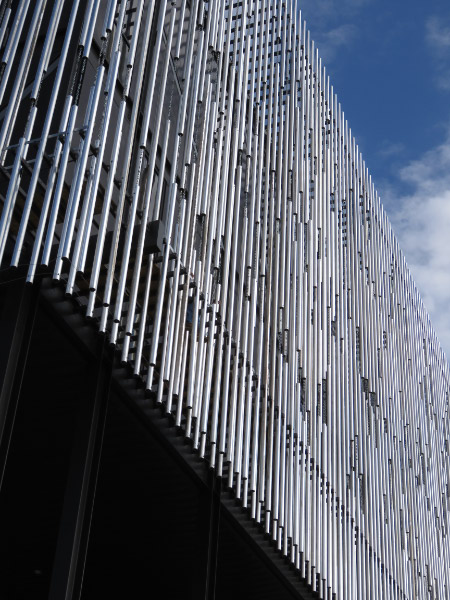
Inside we wondered around the lobby before the tour. I was looking for various ways the large tree cookies were labeled. I liked the simple white arrows that showed the semantics used: pith, early wood, late wood, branch trace, fire scar, cambium and bark.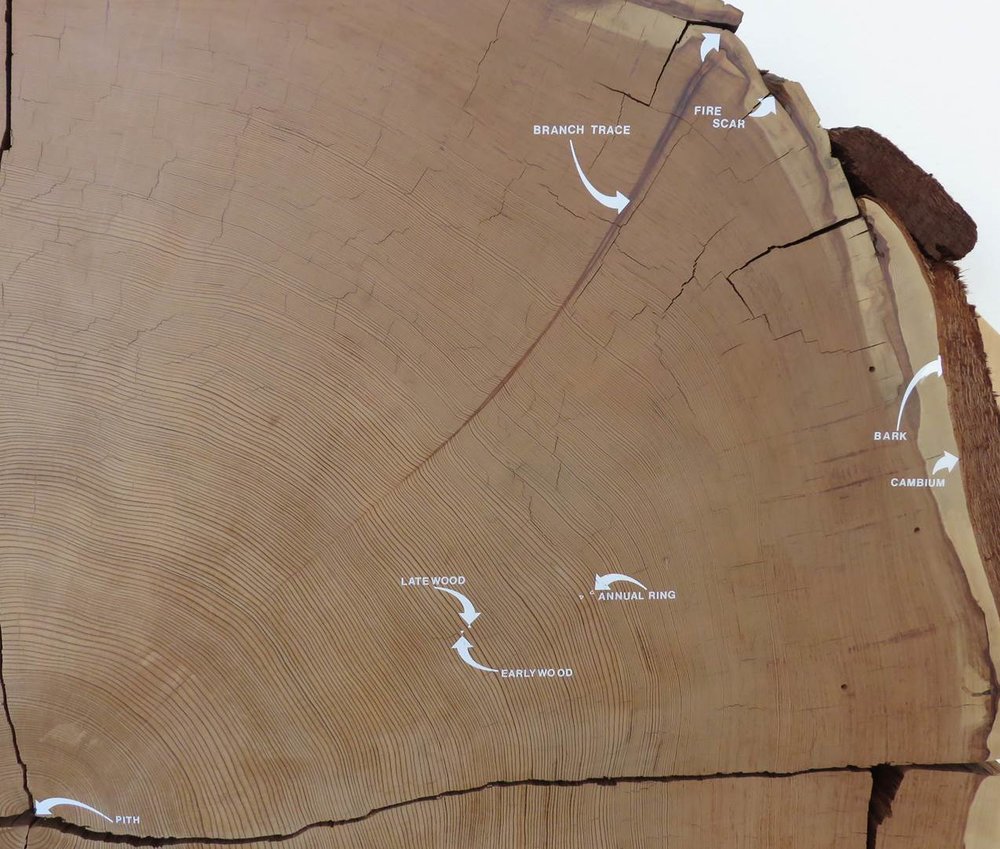
Here is a closer look to understand what a tree ring is (the center of the tree cookie is to the lower left of the image). Note that the rings are not all the same…their width reflects the growth conditions for the year they were growing.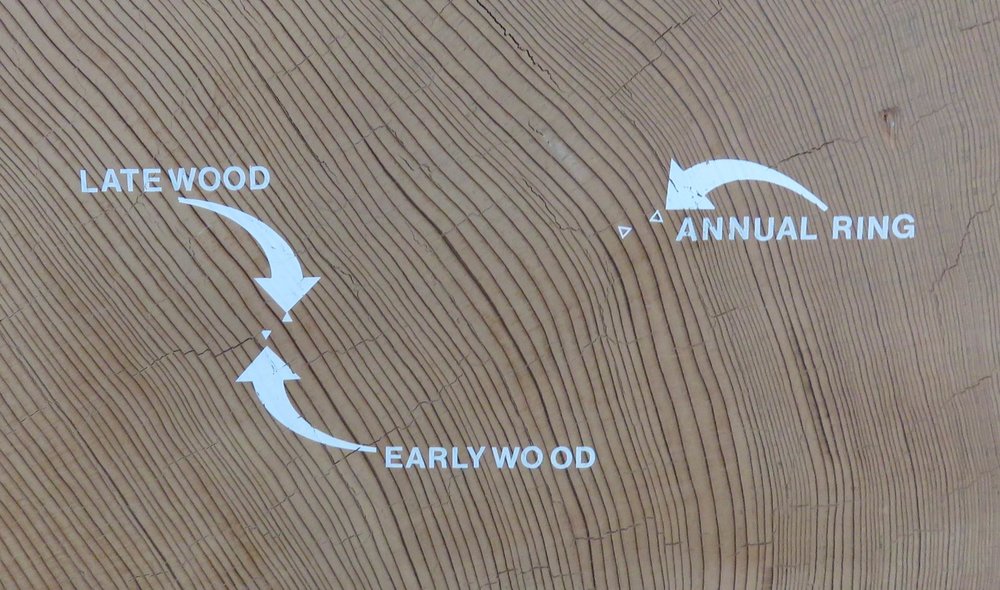
And some trees live for a very long time. The labeling on the tree cookie from the Giant Sequoia that lived 1704 years is labeled with more information.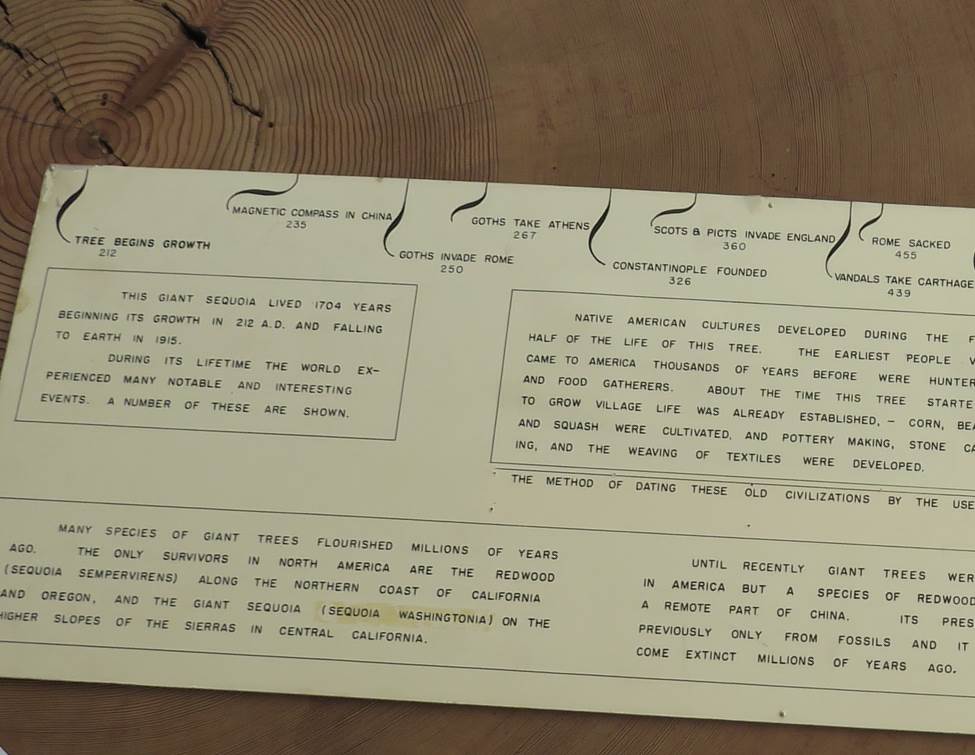
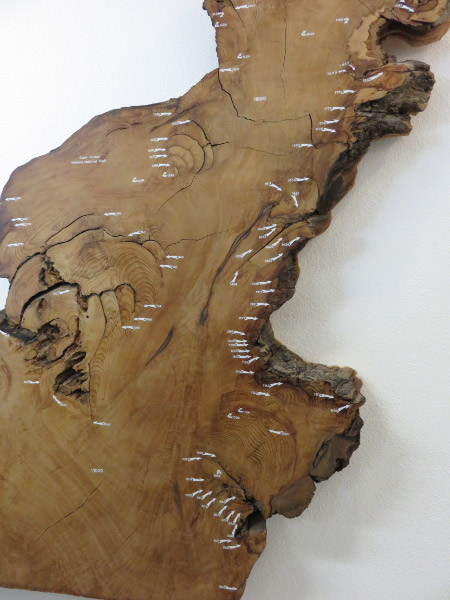 When the docent arrived, we were invited upstairs into one of the labs to talk with one of the researchers who showed us how the sample cores from trees are collected and mounted. The tree-ring lab is multidisciplinary; many specialties are required to glean the information from the samples. I was intrigued by the cross section on one of the upper floors that was very different than concentric rings. This would take a lot of finesse to interpret!
When the docent arrived, we were invited upstairs into one of the labs to talk with one of the researchers who showed us how the sample cores from trees are collected and mounted. The tree-ring lab is multidisciplinary; many specialties are required to glean the information from the samples. I was intrigued by the cross section on one of the upper floors that was very different than concentric rings. This would take a lot of finesse to interpret!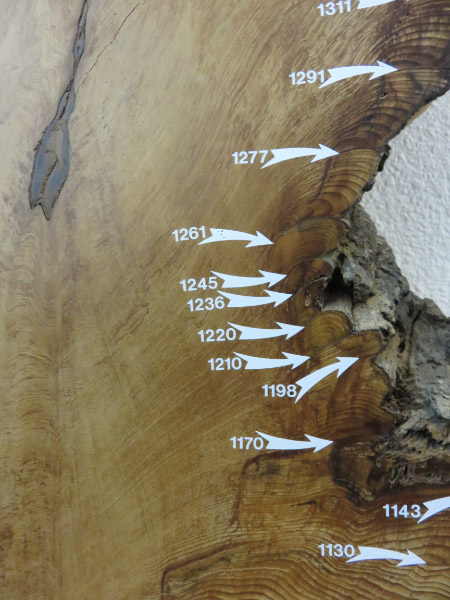

I’ve included two close ups to show the dates labelled on the specimen.
One other tidbit I picked up from the docent: on the elementary school tours, the children are given a small tree cookie (~3 inches in diameter) and the children sand it to reveal the tree rings! That would certainly be a memorable learning experience!



















